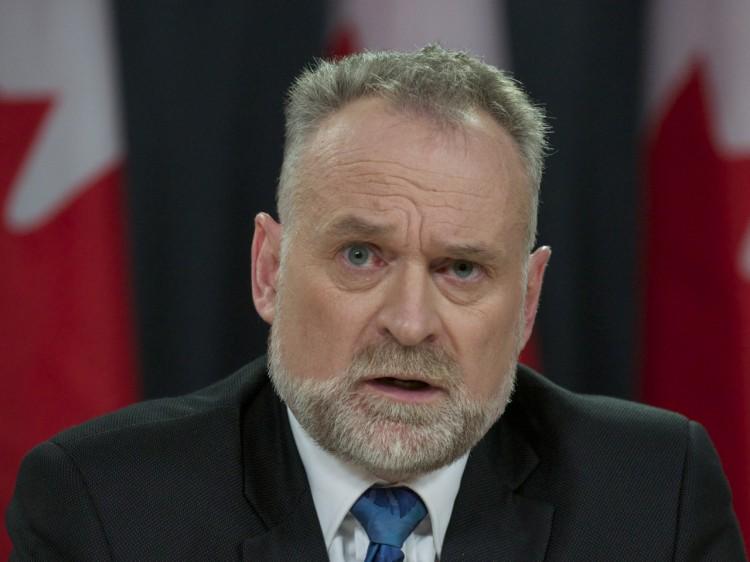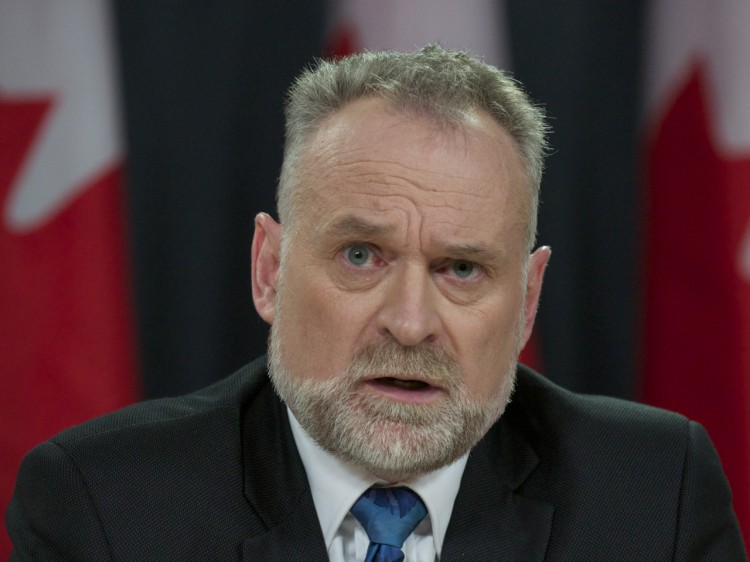PARLIAMENT HILL, Ottawa—Auditor General Michael Ferguson has laid waste to the government’s line of the F-35 fighter jets in a report outlining a deeply flawed procurement process.
The report was eerily reminiscent of another scathing review of military procurement by former Auditor General Sheila Fraser, raising questions about why the fundamental issue raised in both reports has never been dealt with, namely National Defence providing decision makers with incomplete or inaccurate information.
The previous report looked at massive cost overruns in the purchase of military helicopters by the Department of National Defence (DND). Fraser, like Ferguson, noted that DND didn’t properly cost the purchase and decisions were made on low-balled figures.
While Ferguson found a long list of deficiencies with the plan to purchase the F-35s, he stopped short of allocating blame. More than any other question, the new AG has been badgered to name who is to blame, a question he has deflected by explaining that his office looked at the process, not the individuals.
But when pressed repeatedly, he noted the report is a public document with frank conclusions.
“I think the information is there for people to hold the government or the decision makers accountable.”
Ferguson’s detailed look at Canada’s participation in the U.S.-led Joint Strike Fighter program behind the F-35s uncovers a broken process that resulted in misleading information coming from the government.
The government announced its plan to buy the jets in July 2010 without following a competitive process, notes the report.
National Defence initially handled well the plan to join the F35 Joint Strike Fighter (JSF) program, making a commitment to fund parts of it and thereby earn the right for Canadian companies to bid on the avalanche of contracts connected to it.
However, when it came time to decide whether to buy the jet, DND provided decision makers with misleading information used in a mangled process.
“In the lead-up to the government’s 2010 announcement, required documents were prepared and key steps were taken out of sequence. Key decisions were made without required approvals or supporting documentation,” notes the report.
“[Public Works] endorsed the key decision to sole source the acquisition of the F-35 in the absence of required documentation and completed analyses.”
DND left out risks and limitations while emphasizing potential benefits, the report says.
“Briefing materials did not inform senior decision makers, central agencies, and the Minister of the problems and associated risks of relying on the F-35 to replace the CF-18. Nor did National Defence provide complete cost information to parliamentarians.”
Sidestepping Policy
National Defence looks to have sidestepped normal procurement policies due to the unorthodox nature of the F-35 program.
While a 2006 MOU further committed Canada to the JSF program, because it was not an actual purchase order, National Defence did not consult with Public Works, the department responsible for procurements. By that point Canada was committed to contributing US$710 million to the program.
A crucial DND analysis prepared in 2008 concluded that of three aircraft considered to replace the CF-18, the F-35 offered “exceptional capability at the lowest cost and unparalleled benefits for the Canadian aerospace industry.”
Unfortunately, that analysis was also incomplete and overly optimistic.
National Defence had a critical opportunity to come forward with full costing for the jets in March 2011 when Parliamentary Budget Officer Kevin Page issued his analysis of cost estimates.
The government had maintained the total price for the jets would be around $16 billion over 20 years, including maintenance. Page put that figure at closer to $29.3 billion over 30 years, which is closer to the actual life cycle of the jet.
The government dismissed Page’s report, but Ferguson’s report reveals that in June 2010, DND estimated the cost of the program at $25 billion, a figure that dropped to $14.7 billion less than a year later when DND responded to Page’s report.
In response to the AG’s report, Page’s office issued a statement saying it was “ready and willing to serve Parliament by providing independent analysis on any new options the Government may wish to consider replacing Canada’s aging fleet of CF-18s.”
Despite DND’s inconsistent budgeting, Ferguson let the government off with a single recommendation: DND should refine its estimates with complete cost estimates.
Laying Blame
Ferguson’s ambiguity about who should be blamed for the debacle was liberally interpolated by NDP leader Thomas Mulcair.







